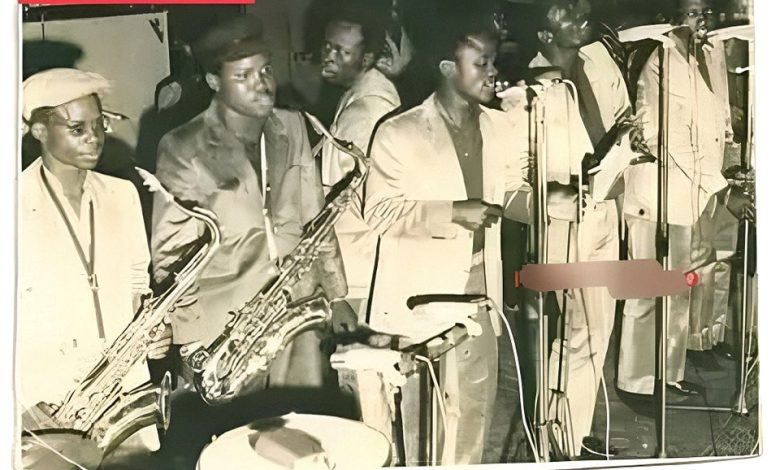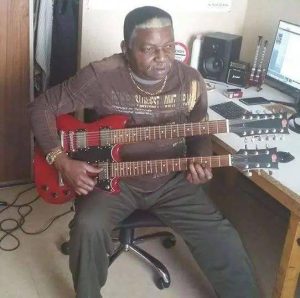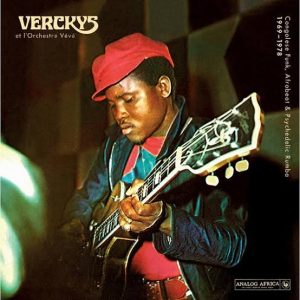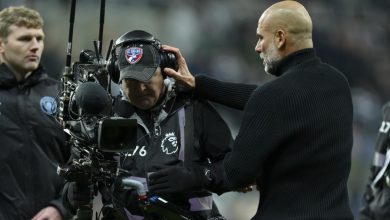Cavacha: The 1970s dance craze that rocks EAC nations

DAR ES SALAAM: IT was a cool Saturday night at a hotel in Kampala city when an undisclosed live band was heard playing Baruti of Orchestra Veve to perfection, and that tune added something to the beauty of the Ugandan capital’s night in the mid-2020s.
It was not known exactly where the band was playing, but its clarity in volume and audience applauds convinced the writer that it was not far from the dead centre of the seven-hill city.
Also heard clearly was a distinctive honky tonk sound similar to the Kiamwangana Mateta Verkys’s tenor saxophone in its sebene; and of course, the Lambion-like Gibson guitar tone in the fourth octave almost made it look like a throwback to the real days of the Orchestra Veve in that young night, all that proved the band had a thorough rehearsal of the song before bringing it to the stage.
A week later, in Mwanza, Tanzania, about 350km south of Kampala, Les Kamanyola was doing almost a similar thing at Villa Park, it with the 1974-recoded, Mikolo Mingi also by Orchestra Veve being expertly played.
“I see a true picture of the early 1970s here through this song. What is missing here is bell-bottom pants and platform shoes,” remarked Masolwa Malendeja, a businessman in his late fifties.
For him and many others who frequently go to Villa Park claim the spot’s repertoires bring back to the old good days of the mid-1970s’ when vinyl-recorded music coming in under Edition Veve, Edition Sakumuna, PolyGram, Phillips and ASL labels, dominated dance halls.
From what music fans reacted and commented on Youtube and other music platforms, music played by Orchestra Veve and its associated groups like Orchestra Kiam, Lipualipua, Shamashama, and Les Kamale evokes the good life and vibrant life in East African cities when most countries enjoyed over ten years of their independence.
For the residents of Lake Zone regions of Tanzania, Villa Park seemed to be a meeting point of town folks, most of them senior and middle-aged music fans, and business people from Kenya, Uganda, Burundi, Rwanda, Tanzania and the Democratic Republic of Congo.
Super Kamanyola, is a live band consisting of experienced musicians who previously served big groups such as Mwenge Jazz, Mlimani Park Orchestra, Maquiz du Zaire, Washirika Tanzania Stars and Tam Tam bands . It draws a big several music fans who still adore classic music done in Lingala and Kiswahili music.
“People tend to call cavacha any Congolese music recorded of the mid-1970s. It is a middle-aged’s favourite, while those in their 30s say they love the music because their parents owned vinyl records of the songs,” noted Mukuna wa Mukuna Roy, the band’s tenor saxophonist soon after playing his part in ‘Mikolo Mileki Mingi’ released by Orchestra Veve in the early 1970s.
Since the mid-1970s, most of the hits the East Africans labelled as Cavacha came to Tanzania under Edition Veve, and ASL labels through a Kenya border and a few of them, from Edition Sakumuna label, found their way into Tanzania through the Zambian border.
Alongside the mentioned labels, Polygram was the most dominant label and was credited with producing the best music sound, including the much-loved Cavacha dance.
“There is a big cavacha fanbase in Tanzania and Kenya today, and amazingly, some of them are too young to be lovers of the genre that dominated radio days fifty years ago,” notes Mbazigwa Hassan, a presenter of Cavacha Time, a midnight music show aired by TBC fm Station.
He said most of the Cavacha dance fans communicate regularly through his radio and other media outlets most notably Youtube, Facebook, Instagram and other social media serving as music outlets.
Tshimanga Kalala Assosa, who served Negro Success, Orchestra Bella Bella, Lipua Lipua, Les Kamale and Fuka Fuka before coming to Tanzania, and the Kenyan James Angana have been widely used in reviewing some major hits and explaining the messages they contained to Swahili and English East Africans.
Though most Cavacha fans never met him, Kenyan Fred Machoka is among the well-known past promoters of the genre, and he has already attracted fans from across the region. He has been mentioned most often by his fans and the staunch supporters of the genre.
In one of his comments on Kamiki by Orchestra Kiam, Machoka says:” Some of the top hits of the 1970s which shaped my life here in Kenya as a young radio Dj. Kamiki along with Ngali, Mfueni, Nouvelle Generation, Tapale and Photo Madjesi were just the bomb!!! Here I am reliving the moments in 2024. Thank you God.”
Though Assossa claims Cavacha is not a type of music but rather a dance style, music fans of the mid-1970s, the majority of them most often claimed it was inspired by American Soul legend, James Brown in 1974 after performing in Rumble in the Jungle, which auditioned a boxing fight between Mohamed Alli and George Foreman.
They say, Cavacha, as a dance style, got its inspiration from James Brown’s performance in Kinshasa during the Rumble in Jungle audition, their claims dwelt on energetic body and foot shakes similar to the way James Brown danced. Platform footwear (christened rise-on) bell-bottom and body-fitting shirts(slim fit) were popular outfits they claim to have been popularized by James Brown through his energetic performance in Kinshasa 50 years ago. Tanzanian Clarence Haule explains here in her comments on Kamiki by Orchestra Kiam.
“I could not resist shaking my shoulders as responded to Cavacha style of dancing. Then I remember Evening Social at Weru Weru Girls Secondary School; Wooow those days!.”
She is supported by her Kenyan brother, Henry Katumpe who said:” I first heard the song (Kamiki) in 1976 still in class 6 or so, my first question was what is the name of this music and a fellow youngster of Majengo in Narok told me it was a disco.I took the music was disco. The deejay was very slim and tall wearing the high waist trousers called Set Me Free and platform shoes which had a sole half a foot, high. That was a long time but of course, in Secondary School I now understood music better. Old is gold.”
Also looked as a seminal hit to the fans of cavacha dance is Les Kamale’s Ngali composed by Mulembou Tshibao.
Ugandan Matovu sees the best of the song in guitar and drums, which he claims laid a track of cavacha dance. He said:” The lead guitarist(Kinzunga) is wonderful and the drummer does it well.”
Zambian Chiweta Dikedi adds:” I have been looking for this track and song since I was a little boy and I am now 56years old. This was my late mother’s best music.”
The claim that James Brown brought the shaking style in Kinshasa is very likely, but it was modified to bantu-styled and as per comments by Clarence Haule, East African lady’s dance was rather a waist-sway or gentle hip-shake as opposed to James Brown’s swift feet shakes.
During his performance in Kinshasa in 1974, James Brown’s foot shakes went along together with the ‘fake-slip dance’ which has been copied by many musicians including Evoloko Joker who is reputed to have invented the dance. There was a photo published in Kenya’s Taifa Weekly in 1974 that showed Evoloker Joker in a James Brown-like fake-slip dance.
Also worth to note from the fans’ comments on Orchestra Kamale’s Ngali, is the revelation that Cavacha dance style was guided by guitar and snare drums as the pillar heads of the shakes, pays homage to Ton Ton Kinzunga Lycos in the gallery of great cavacha-era guitarists, though in reality, he shrugged off the funky influenced guitar of Jimmy Nolen who supported James Brown concert in Kinshasa five decades ago.
As per Edition Veve, Sakumuna and ASL labels, the most heard ‘gentle’ drummer was Nsayi Nono Nkuka of Lipualipua.

For Kiam, lead guitarists Djuke Mokanda or Adamo Lewis(Mfui Mwane), rhythmists Lele Nsundi and Djo Morena, and drummer Suke Ngonge or Mack Joss were the masters of the onslaught as evidenced through hits like Moni Afinda, Masumu, Mbale, Bomoto and the much-talked Kamiki.
In Nouvelle Generation, as most of its fans commented, Nsayi Nono Nkuka’s snare drums did better than the guitar interplay performed by Santana Monguisa Mongoley(lead),and Vata Mombasa (rhythm) in facilitating body shakes.
Samuel Wambua adds:” Guys you are joking, this one made me mud and mad. From Kenya, I didn’t get any word but the guitars commanded every battalion. Bravo Congolese
Mike Rosco joined saying:” The year was 1974 December and Nyanginja was posted at Mbaraki police station, Mombasa. Out of nowhere, he put this song on his red Phillips record player. I was hooked to Lipua Lipua!!
Also commented was Harry Mog4501 who said:” OMG, I can remember this music then in Nigeria in the 70’s. It used to be Dad’s favourite music and some other Zairean music in the 70’s. Love
But Pamela Awour said this on Npouvelle Generation:” The dancing style was * bumping*.”
A Congolese Theophile Selubanzi seemed to have read well the vinyl record.
“Nouvelle génération, composée par Mbudi Malanda et chantée par Kilola Toko, 1ère voix, Nzaya Nzayadio et le compositeur Mbudi ont fait la 2ème et le tenor.”
It’s fascinating to hear Chebukosi Wasike who said:” We used to sing in Kiswahili ” Onyango shika dem kamata ha”
If it is real Verkys himself or his son, Gregoire Kiamuangana-Mata said this on Noovelle Generation:”Vieux na ngai Nzaya félicitation plaisir ya trop.
Kenyan James Ochami on Mbondo said the Cavacha craze era was trouble-free.
“At this time of Covid-19 and the lockdowns.. Relax with classics.”
Even after leaving Lipualipua, guitarist Kinzunga Lycos seemed to have left a finger mark in every lead guitar tone as commented by Mombasa Met Station on Mbondo:”Thanx Ricos KIn’zunga (Mongoley) Without your knowledge God used you and made a lead guitarist ,,,Today am praising him,, Jesus is Lord,,,AMEN.”
The modern-day Congolese youths think differently about the Cavacha guitar style and some like Lev Mayi, claim the guitar sound of the hit Kamiki has been turned into vocals by a score of modern music practitioners.
Lev Mayi says on Kamiki:”Fally essaie de remixer ces guitares celebres(Fally (Ipupa) is trying to remix these celebrated guitars).”
Another Congolese calling himself Delphin Kabongo said:” 3/4 des musiciens de Lipua Lipua, Kiam, Veve avaient trouvé mieux d’aller tenter leurs aventures en Afrique de l’est. (Kenya, Tanzania). He claims that three quarters of musicians who served Orchestra Lipualipua, Kiam and Veve found it better to live in East Africa(Kenya and Tanzania).
It was hard to convince Tanzanians of the 1970s that Cavacha was wholeheartedly a Kinshasa-based dance as they believed Kinshasa just produced musicians, and Nairobi, through its mighty PolyGram sound tech, polished it in good-sounding vinyl format.
And that, as one of the Tanzanian music legends, Juma Kilaza, echoed in the interview with the reporter, the great Congolese hits had to find their way to the Anglophone countries and others like Tanzania after being flavoured by the Nairobi sound.
“Our music ceased to develop in 1977 when the East African Community collapsed, and that barred us from recording in Kenya where they know how to create an up-tempo and danceable beats,” he said in 1994 in Morogoro during his talks with the reporter.
By the late 1970s,Cavacha, since it was not a type of music but rather a dance style, was no longer popular in the Kinshasa music circuit, according to Tshimanga Assossa, who then brought to Tanzania a new music style christened Mukonyonyo in 1977 before later the arrivals of Nyekeze Paralyse and Zekete Zekete, but none of them won the hearts of the Tanzanians.
Cavacha dance has been a piece of jewel to music fans in Anglophone countries, but surprisingly, it held a short-time reign in Kinshasa and other Congolese cities.
It’s baffling how the East Africans; Kenyans, Ugandans and Tanzanians continue to rule cavacha as the best ever music artistry from the Democratic Republic of Congo whose citizens are still glued to Zaiko Langa Langa and its variants as the best from Congo in the post Franco-Tabu Ley era.
The best of it explains the beauty of African nations as they celebrated 10 years of their independence.
Kenyan Francis Otieno had this comment on Moni Afrinda which together with Nouvelle Generation of Lipualipua and Mikolo Mileki by Orchestra Veve have been seminal hits that best described Cavacha era craze.

“Its hard to live with the fact that this musical gem cannot be found in modern art! I loved this group especially the great Bakolo Keta. He had a way with his raspy voice that made dancing with a woman a pulsating experience!
As George Nyangwe commented on Orchestra Kiam’s Moniafinda, music of Zaire was the best ever compared to today’s music of the Democratic Republic of Congo.
“Nice music, very nostalgic. We will ever this calibre of music again”
From Tanzania, Aikambe Kyara adds on it:” Great song Moni Afinda! we used to imitate the Rhythm guitar singing in Swahili, “kipindupindu cholera kipindupindu cholera!.”
Cavacha also won followers far away in Sierra Leone as claims Alusine Barrie. This is his comments on Kamiki:” Just got to Secondary School in Kabala Sierra Leone. Memories of sweet Sierra Leone those years. Secondary School fees was 8.20 Leones (eight Leones twenty cents) per term.
Chovuse from Uganda joins saying : “The Soukous songs from Orch. Kamale, Veve, Cavacha, Super Mazembe and others were all National Anthems in his school days in the 70s.
Tomingosi adds:”“Verckys rules the world, in 70s and 80s. RIP.”
“This is not reality, it is one’s personal views,” said Assossa who also opened lid on East Africans’ views about the popular dance style.
“Its not true that Kinshasa detested cavacha, but It is true that a good number of big players of the dance style left Kinshasa for a greener pasture all over the world.it is not specifically they all emigrated to East Africa and English Speaking countries,” he corrected.
Insisting he said Cavacha is not a music as most of people think.” It is merely a dance style as by 1977 it was eclipsed by Mukonyonyo, Nyekesee Paralysee and Zekete Zekete.
Adding, he said not all bands under Verkys patrtonage played Cavacha and one band, Orchestra Kiam throught its singer Bakolo Kedta called their dance Malinga.
But on the contrary, the musicians involved during the Cavacha era its practitioners helped to bring Congolese music to many nations and made it known worldwide as Sokous
Assossa named cavacha-era stars who left Kinshasa and did several good works there including his Les Kamale bandmates; Nyboma Mwandido and Dally Kimoko, Pepe Kale, Santana Mongoley, Lusuama Aspro, Mbuta Diasolua, Wuta Mayi, Ngouma Lokito, Nene Tchakou, Vata Mombasa, Kilola Toko Diangani (Kilola wa Salai, Nzaya Nzayadio and himself among a notable few.
The presence of the anti-rumba craze going by names Bayanki or Batsheke in the mid-1970s was good evidence of James Brown’s influence in the cavacha craze.
From somewhere, Koffi Olomide’s baritone voice is heard saying in Mousoukousoukou his duet with Papa Wemba …..,Ba petits a Kimpwanza, baschengen(batsheke) na rond point Mandela….
It’s exactly five decades now since James Brown and the Flames bandmates; guitarist Jimmy Nolen, and saxophonist Maceo Parker performed in Kinshasa in 1974, and also fifty years since cavacha dance won the hearts of East Africans and others from English-speaking African countries such as Zambia, Sierra Leone, Nigeria, Zimbabwe and far away in Latin American countries with Barankwila and Tijuana Latin being the staunch supporters of the East African music.
Though it might be highly debatable, the cavacha inspiration has unknowingly drawn its grandchildren as seen through the Bongo Flava legend, Lucas Mkenda (Mr Nice) who recently said he has decided to shift him music base from Dar es Salaam to the Kenyan capital, Nairobi saying its people value his music.
Mr Nice of Fagilia Bongo fame, has a big number of supporters in Kenya and was one of the early musicians who initiated TAKEU, a dance style for three East African neigbours; Tanzania, Kenya and Uganda.
Little does he know that he has brought his music where belongs. He might look like a grandchild of cavacha era from his eponymous hit, Fagilia Bongo whose chorus “ Kuku kapanda Baiskeli,Bata Kavaa Raizoni..( Hen cycles on while a duck is on rise-on foot wear) falls on Ton Ton Kinzunga Lycos guitar tune he played in Orchestra Les Kamale’s Ngali, released in mid-1970s.
Ngali is one of the hits whose authenticity is Katanga region, precisely Kasai, in the South Eastern province of the Democratic Republic of Congo.
Traditional lute player who called himself Mzee Kanyau used to sing a mimic of Ngali with ‘Kuku kapanda baiskeli,bata kavaa raizoni’ at Mnazi Mmoja Park in the late 1970s and Mr Nice was not born then.
Ngali and other hits Kinzunga Licos played for Orchestra Bellabella, Lipualipua, Les Kamale and later Fukafuka, making him the most adored Congolese guitarist by Tanzanians today.
Tshimanga Kalala Assossa, who p[played with him in all four bands, is a good witness as he has seen Kinzunga in Kassim Rashid (Mlimani Park and OSS) while another Kinzunga disciple in Miraji Shakashia is frequently mentioned in African Stars (Twanga Pepeta) music even today.
It was in 1974 when James Brown’s master guitarist, Jimmy Nolen influenced young guitarists who challenged Franco Makiadi’s dominion.
Though his style lacked Bantu idiom, Nolen’s guitar style played a part in creating a cavacha-era guitar style that facilitated body shakes as evidenced in Stukas’ Nale Okendeke whose guitarist was Bongo Wende after the departure of Professor Samunga Tendiagaye.
Unknown in East Africa in those years, Professor Samunga did well in Yanini and Natamboli Moto by Orchestra Veve can serve as the best examples mainly duetting with the rhythm guitarist Nguendi Aladji.
But with Orchestra Veve, Professor Samunga threw away certain elements of funky as it was not responding to the popular African discipline of call-and-response rhythm.
As seen in both Nale Okendeke by Stukas, and Yanini, Nolen’s chicken scratch style, and its augmented 13th chord, the guitar styles were shrugged off but maintained the shaking dance as seen through the performance of singers Lita Bembo, Djo Issa and Alida Lomingo. The best from Nolen and James Brown was just play in that bodies can do shakes, but not fast shakes that could look ‘ungentlemanly’ to the town folks of that era.
Others who played guitar tunes that facilitated gentle shakes as seen in many Cavacha dance hits of the era include Porthos Mpia Mongongo, Roxy Tshimpaka and Djuke Mokanda, Adamo Lewis(Kiam) , and Cyril Mandiangou of Orchestra Sosoliso, the band that even tried to sound like James Brown in its lively performance
Lidjo Kwempa of Nouvelle Generation and Zipompa Pompa fame was quoted as telling reporter Ado Yuhe that James Brown initiated changes in Zaire Music and mentioned Bongo Wende as among the notable disciples of James Brown’s funky guitar that facilitate dancers to shake their bodies or feet to suit James Brown’s style.
Why Cavacha was widely accepted in East Africa and some of the Anglophone countries is a hot debate even the Verkys himself couldn’t provide a perfect answer during his lengthy talks with the reporter at the now defunct Embassy Hotel in Dar es Salaam where he toured in 1998 accompanied with Jimmy Msimba Monimambo of Moja One fame.
He couldn’t explain why East Africans claim that cavacha failed to hold high esteem in Kinshasa like Zaiko Langa,one of the bands he sponsored.
In a simple answer, Verkys, who vehemently opposed being called Wazolambongo(money lover), said the war against piracy forced him to press his vinyl records in East Africa since if they were to be printed in Kinshasa, the pirates could quickly smuggle the works to East Africa and make him lose its good market.
That was a year later better explained by ex-Kiam singer who came to Tanzania with Pepe Kale and his Empire Bakuba band.
“ We were not performing artistes, we were paid for recording,and after that nothing else. Loyalty system was not available in those years,” he said as he begged to remain anonymous.
Kasongo Mpinda, who actually sang original Seya, once commented: “In short, East Africans and those from Anglophones seemed to be impressed with the sound of Katanga or Shaba province. Originally it should be the rhythmic guitar sound initiated by John Mwenda Bosco(Jean Mwenda Bosco).
He insisted Mwenda Bosco was instrumental in early recording works and his works helped to create the Katanga-East Africa sound when it comes to the guitar sound, and that went on to be developed through the generations of Bana Ngenge, Super Mazembe, Orchestra Mangelepa whose most works were recorded polished by Kenya-based Polygram.
“Subtle Katanga style in both singing and guitar sound seems to suit the Tanzanians and other East Africans,” he added.





